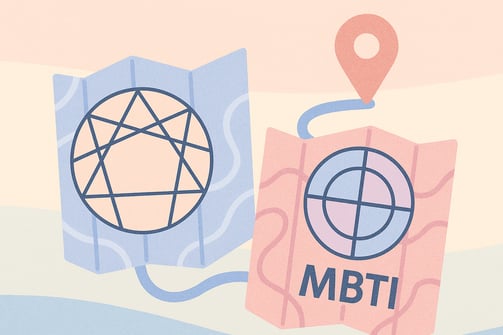Enneagram and MBTI: Two Maps, One Journey.
Erick Sebastian Quimbayo
1 min read
Along my path of inner exploration, few tools have transformed me as deeply as the Enneagram and the Myers-Briggs Type Indicator (MBTI). They are very different in structure, both offer the same invitation at heart: to see ourselves with more honesty, depth, and compassion.
While MBTI describes our natural preferences for perceiving and deciding (for example, whether we favor intuition or sensing, thinking or feeling), the Enneagram goes beyond behavior. It points to the emotional core around which we organize our identity.
One is descriptive.
The other, transformational.
And yet, when used together, they give us a more complete picture: MBTI shows us how we are, while the Enneagram helps us understand why.
I'm an INFP in MBTI, which speaks to my introverted, idealistic, meaning-driven nature. But discovering that I’m also an Enneagram Type 9 helped me understand why I avoid conflict, why it's hard to assert my presence, and why I sometimes lose my sense of direction by adapting too much to others.
MBTI helped me understand how I function.
The Enneagram helped me heal the part of me that forgets myself.
By integrating them, I gained two things:
A compass to understand myself without shame.
A path to grow from who I am — not from who I think I should be.
Both tools have allowed me to walk with others — not as an expert with all the answers, but as a human being still learning to come home to himself. If you're on a similar journey, I invite you to explore both systems with curiosity — not as labels, but as doorways into a more authentic life.
Because in the end, self-knowledge is not a destination —
It’s a constant practice of coming.home


